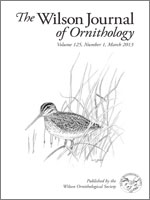Feral herbivores can affect birds on islands indirectly, by altering habitat structure via impacts on vegetation. I censused birds in an open shrub/grassland habitat on Santa Cruz Island, California, in 1980 and again in 2008, 24 years after feral sheep were removed, in order to assess avian responses to vegetation changes resulting from sheep removal. Vegetation change was characterized by an increased density of both overstory and low-growing shrubs, along with denser herbaceous vegetation, and these characteristics were associated with substantial changes in bird abundance. Species that prefer dense shrubs, such as Spotted Towhees (Pipilo maculatus) and Orange-crowned Warblers (Oreothlypis celata), increased in abundance, whereas species such as House Finches (Carpodacus mexicanus) and Mourning Doves (Zenaida macroura) that prefer open, disturbed areas decreased. Rufous-crowned Sparrows (Aimophila ruficeps) and Island Scrub-Jays (Aphelocoma insularis), both insular endemic taxa, showed a mixed response and perhaps prefer wooded habitats in which low-growing vegetation is not exceptionally dense.
How to translate text using browser tools
1 March 2013
Avian Response to Removal of Feral Sheep on Santa Cruz Island, California
Dirk H. Van Vuren
ACCESS THE FULL ARTICLE
feral sheep
indirect effects
island birds
island recovery
Island Scrub-Jay
Santa Cruz Island





